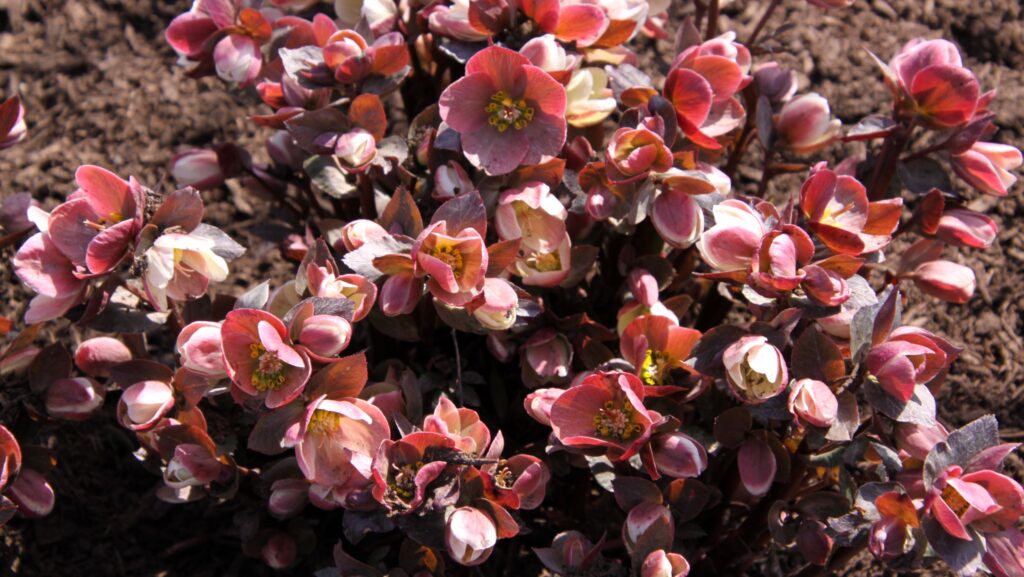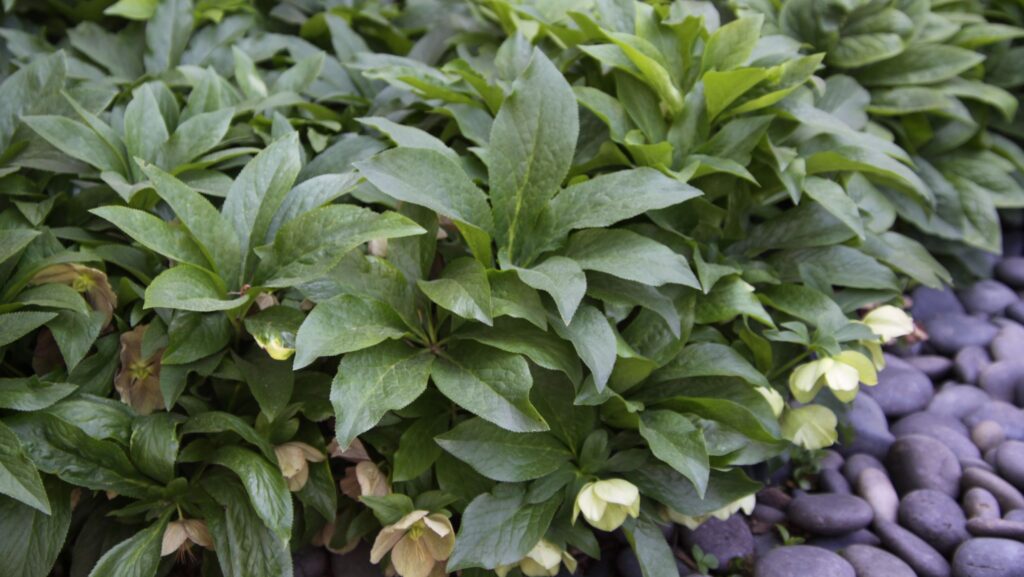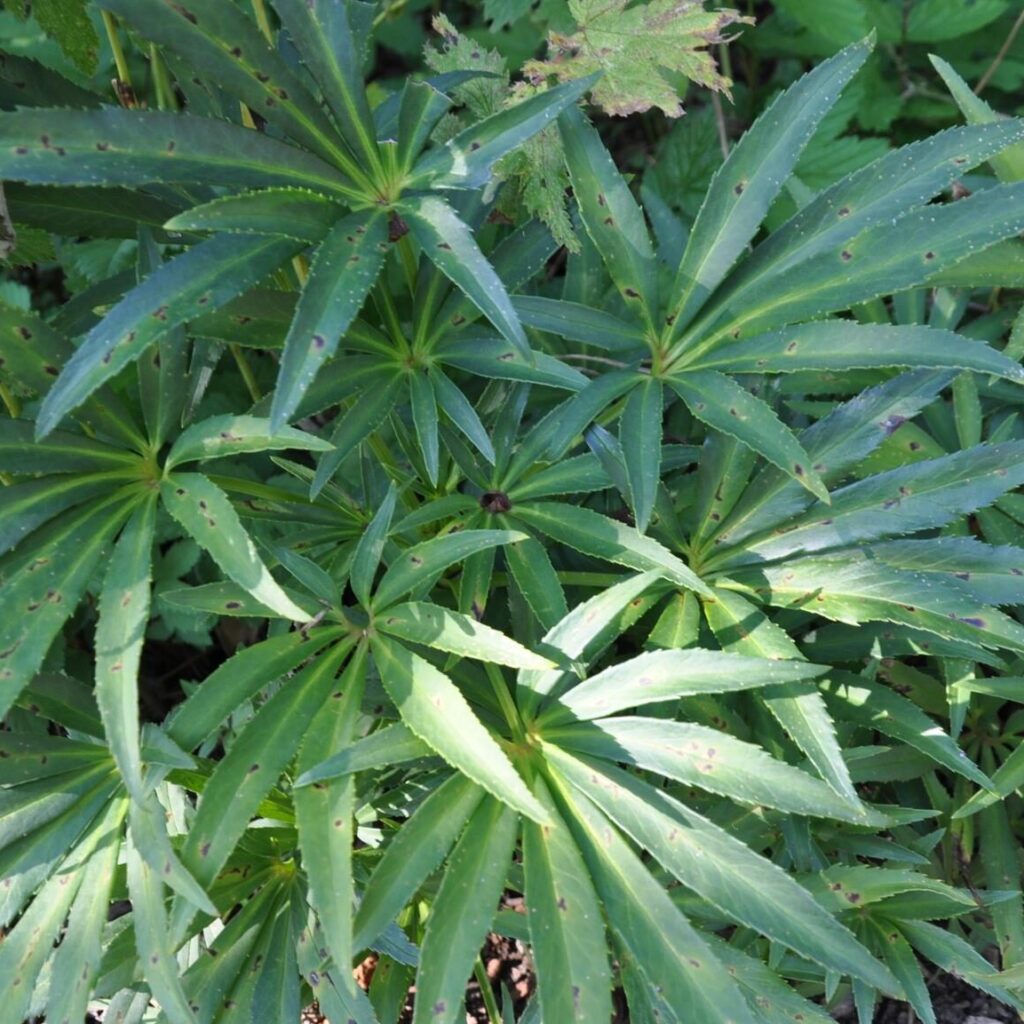
The plants within the genus Helleborus are in the Ranunculaceae family and consist of about twenty species, ranging in descent from Western Europe to Western Asia. Known widely by their common names, “Christmas rose,” “Lenten rose,” and ‘Hellbore,” these evergreen perennials have naturalized — and behaved — well here, in hardiness zones 5 through 8(9). Their nodding, bell-shaped inflorescences resemble muted, antique-hued hoop skirts. Hellebore blooms open as early as December/February in some areas, and their color and form persist for up to 4 or 5 months! The toothed palmate foliage also provides an attractive feature to the garden. Dark green and leathery, the leaves provide a perfect ground cover that also acts as a weed barrier.
There are more than 670 individual specimens comprising more than 10 unique species, hybrids, and cultivars currently growing in the Arboretum. The majority of the hellebore collection can be found around the Overlook Pavilion, Event Lawn, Rose and Fragrance Garden, and Palmer Museum of Art landscape. Learn more about some of the highlights in our collection below.
Helleborus foetidus (stinking hellebore)
Not that hellebores are known specifically for their perfumed fragrance, but this one is slightly malodorous. You do need to stick your nose into the flower to get a whiff, so don’t let this feature deter you from growing H. foetidus! The charming, pistachio-colored flowers are tinged with rose tips, and the plant readily reseeds. It performs best when grown in partial shade in zones 6–7.
Helleborus orientalis (Lenten rose)
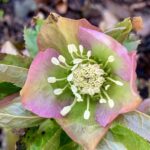 A Mediterranean native, the flowers of Lenten rose bloom in shades of whites and even plum. This species is the easiest Hellebore to grow — just be sure to provide shade and water until established. To present the best display of this low-growing beauty, remove older leaves in the early spring. Doing so will allow the flowers to be more visible and make room for the fresh, new foliage to emerge. If more Lenten rose clumps are what you’re after, keep the surrounding soil rich and healthy for seedlings to take root.
A Mediterranean native, the flowers of Lenten rose bloom in shades of whites and even plum. This species is the easiest Hellebore to grow — just be sure to provide shade and water until established. To present the best display of this low-growing beauty, remove older leaves in the early spring. Doing so will allow the flowers to be more visible and make room for the fresh, new foliage to emerge. If more Lenten rose clumps are what you’re after, keep the surrounding soil rich and healthy for seedlings to take root.
Helleborus × hybridus ‘Yellow Lady’ (Lenten rose)
The remarkable feature of ‘Yellow Lady’ can be found sprinkled inside the inner flower petals. Burgundy freckles enhance the creamy-yellow color of the blooms, making them a joy to behold. Like most Lenten roses, this hybrid is easy to maintain and adds an evergreen groundcover to the landscape.
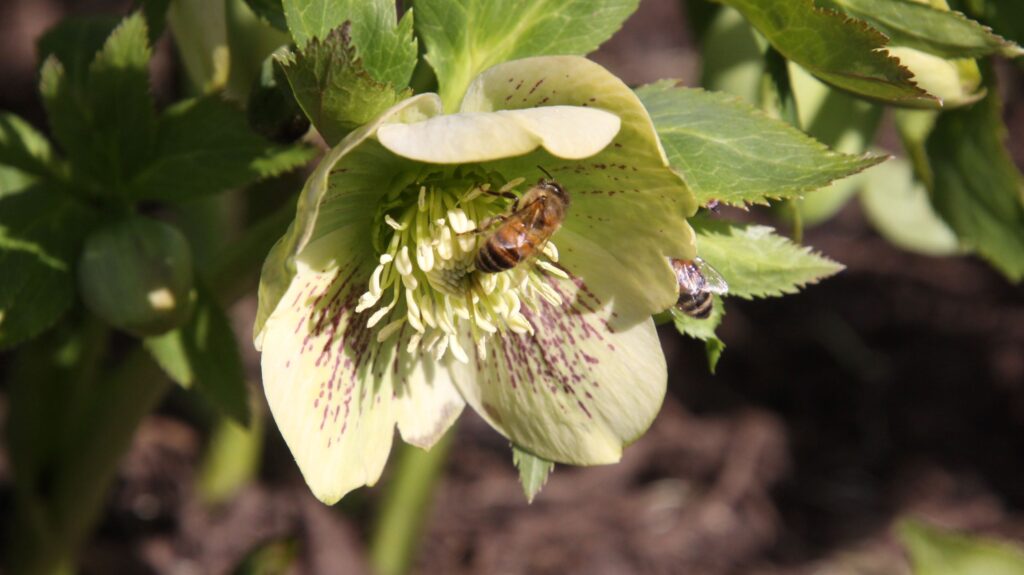
Helleborus × ballardiae ‘Coseh 710’ HGC® Pink Frost (Lenten rose)
Developed through the German breeding program, Heuger, Helleborus HGC® Pink Frost is well known for its rich pink-hued flower buds that open to creamy white, outward-facing flowers. The blooms persist, maturing in color to a dark rose, for months. Like the other species and hybrids within this genus, HGC® Pink Frost appreciates light shade and fertile, well-drained soil. This cultivar is sterile and does not spread by seed.
